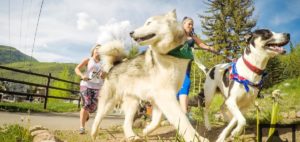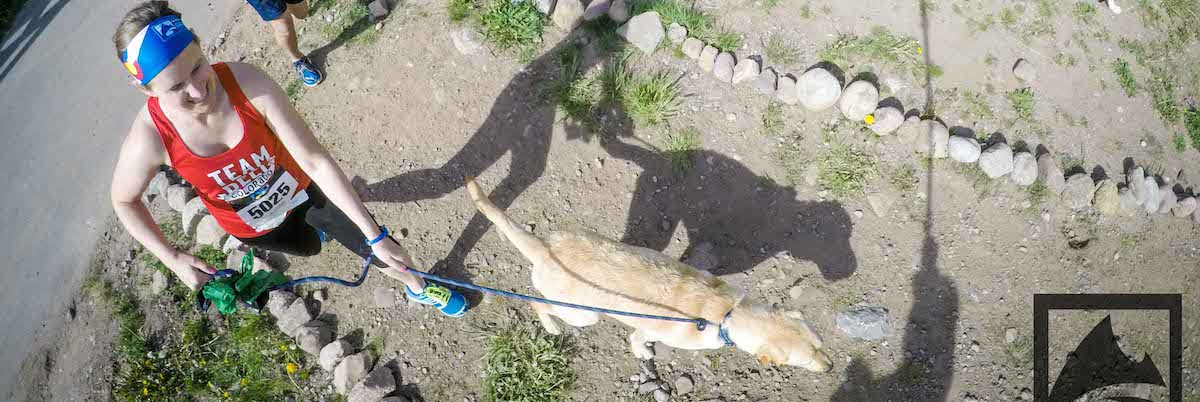Posted by: Tom Boyd
You like running, your pooch likes running … you’re perfect jogging partners

There are a few other pointers to keep in mind when you decide to upgrade your dog walks to dog runs, as noted by Devin Scannell, an ultrarunner and consistent top-three finisher in the GoPro Mountain Games BFGOODRICH Rocky Dog Fun Run.
- Constantly keep tabs on how Fido is feeling
“It’s like running with a human partner. You are gauging how they’re feeling that day,” says Scannell, who runs with Bella, her blue heeler mix. “If she’s too hot and tired, we have to listen to her.”
Bella, who also pulls Scannell on skis during the winter, is typically bursting with energy and has pulled Scannell up a large part of the arduous Rocky Dog course in past runs. But she sometimes loses steam.
“Last year she pulled me the first three quarters of the way, but coming down that last hill, she was behind me and I was almost dragging her,” Scannell says. “That’s when we reel it in. We don’t feel the need to push it.”
- Keep an eye on Fido’s feet
Bella is a solid communicator when her pads are in pain, but some dogs press on bravely without displaying any indication of a struggle. So once you start running with your pooch, you have to pay attention to the condition of their paws. Especially in Colorado, where it’s dry and terrain is rough, a moisturizer should be applied regularly.
“We put a salve on her feet at night,” Scannell says. “She’ll get those tiny thorns sometimes and since it’s so dry here, it’s a good idea to see what’s going on with her feet when we’re on the trail so much.”
- Leash laws and cooling threads
Obviously running off-leash isn’t always an option, so when it comes to selecting the proper tether, it’s important to keep distance in mind to avoid both tangles and take-offs.
Scannell uses an elastic waist leash and harness with Bella.
“You don’t want to be running on top of your dog, but the longer the lease is, the less control you have of your dog. You’ll probably be trying out a few before you find the right one,” she says. “Sometimes we know she’s going to pull us really hard, so we’ve channeled that with a pulling harness.”
Bella also wears a cooling vest when she runs – a vest soaked in water that keeps her cooled off on long hauls in the sun. Carrying water or ensuring that there is a water source along your running route is key for keeping your dog fresh and hydrated.
- Basic commands
No dog owner is a stranger to having their arm ripped out of its socket when their pooch picks up an enticing smell or spots a squirrel and suddenly does an about-face. Obviously this is especially unpleasant when everyone’s moving at jogging pace. Conditioning your dog with a few commands is a wise move before taking to the trail.
“We say ‘on by’ or ‘leave it,’ when she wants to go after something. I’d say you should practice basic commands on walks before you go out on a run,” Scannell says. “If you go for a walk, practice going by other dogs or saying ‘wait’ if your dog is going too hard.”
- Don’t start ‘em too young
The most important pointer of all is that puppies make poor running partners. Veterinarians agree that dogs should be fully grown before they begin running with their owners.
“They’re growth plates should be closed and they should be adults before they begin running more than a mile,” says Angie Carswell, vet technician for dog events at the GoPro Mountain Games. “No matter the breed, they should be a year to a year and a half old before they start running more than five miles with their owners.”
Share this Story:






















